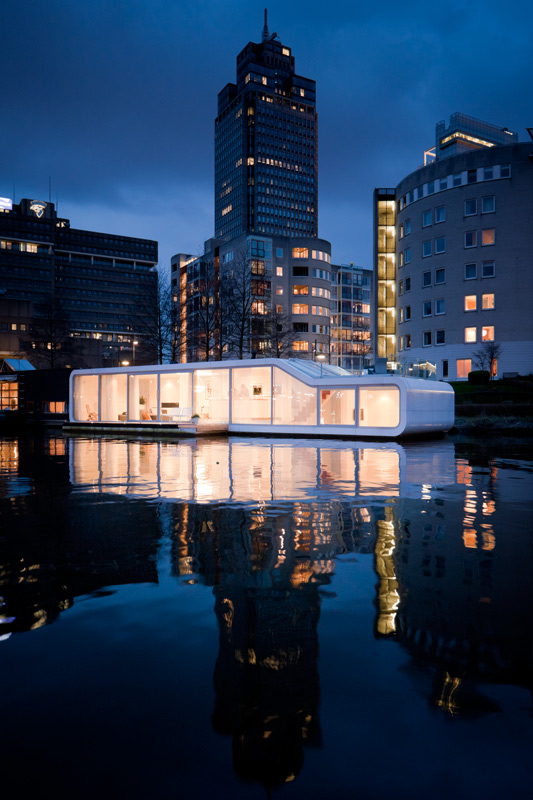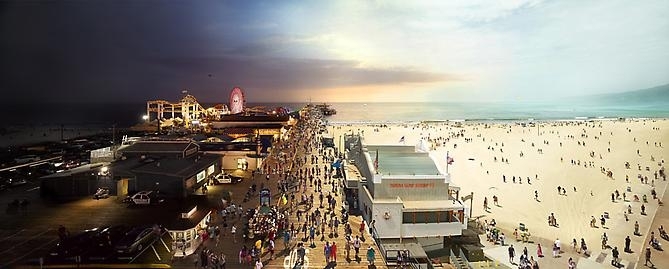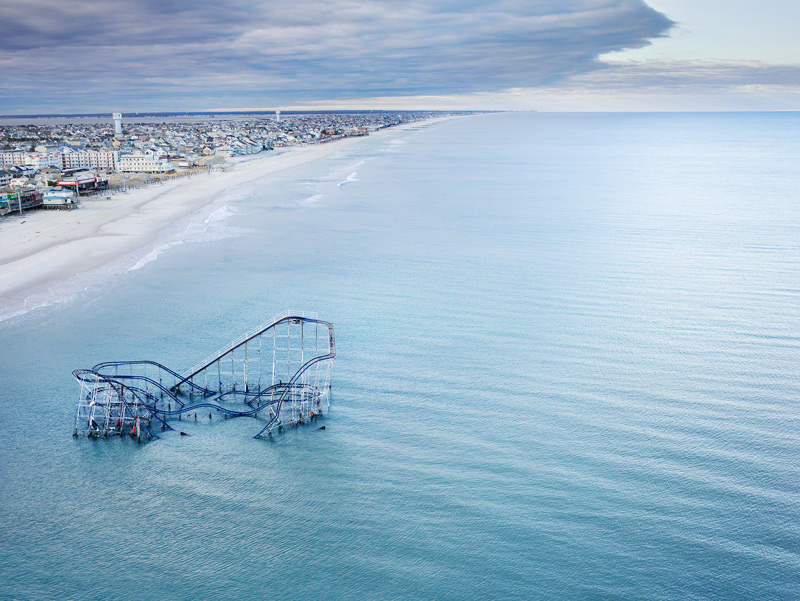
The roller coaster from the boardwalk in Seaside Heights, New Jersey partially submerged in the ocean after Hurricane Sandy. © Stephen Wilkes courtesy of Peter Fetterman Gallery
A few years back, Wallis Annenberg read a newspaper article about architects responding to destruction wrought by Hurricane Katrina and set in motion a photographic exploration of the larger story of climate change for a show at The Annenberg Space for Photography, the state-of-the-art exhibition facility in Century City. Curated by KCRW’s Frances Anderton, Sink or Swim: Designing for a Sea Change opens on Saturday (12/13) and runs through May 3, The Space for Photography shows are always interactive and visually stimulating, and this one is particularly thought-provoking because it pairs an environmental story of devastation with an assessment of our human attempts to live with the encroaching sea. Sink or Swim is a fit for architecture and/or environmental-minded teens and adults.
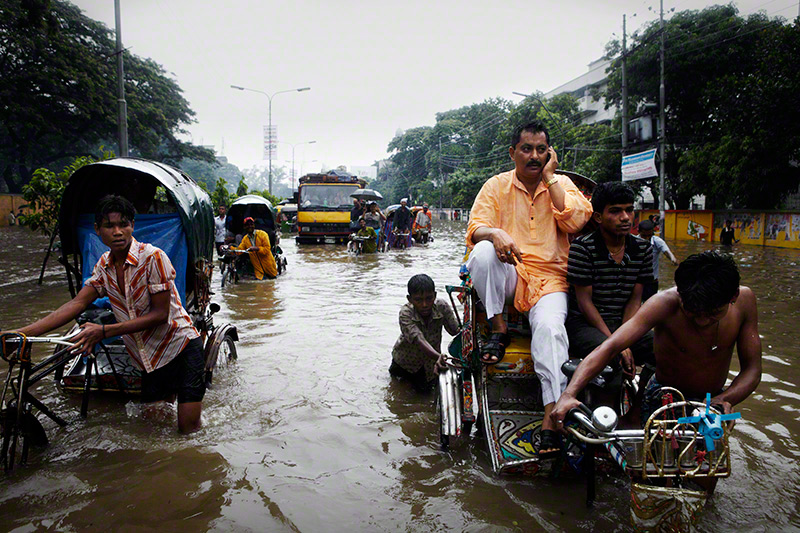
Arambagh, Dhaka, Bangladesh, 2009. After a night of heavy rain, Dhaka experienced widespread flooding around the city. © Jonas Bendiksen.
As always with shows at this terrific space (which recently got an update to its already-impressive digital displays), we recommend saving a half-hour of your visit to watch a documentary from Arclight Productions that will deepen your understanding of the work exhibited. A little narrative is helpful here because each photograph can really only tell a piece of each devastating story. (In the image above, for instance, we learn that people go about their lives in Bangladesh, even as their city is flooded). For the first time in the Space for Photography’s history, photography was commissioner specifically for the show. The photographers are world-class, compassionate artists and most have dedicated their careers to social justice work, and chronicle natural disasters that have produced watery encroachment into communities around the world — from Bangledesh to Japan to the US (Katrina and Sandy) to the Netherlands.
The design part of the show explores the growing trend of “resiliency” in the structural changes being wrought both from the top down (governments and architects) and from the bottom up (communities creating their own simple solutions). The notion that berms can be built, sea walls constructed, and houses designed so that they can “float” when water encroaches is fascinating fodder for any teen interested in urban planning, environmental change, or architecture. Pritzker Prize winning architects, local New Orleans landscape designers, and social justice groups represent the high-level of engagement with this topic.
Because 50% of people in the United States live within 50 miles of coastline, these are issues that face us all.
Most fascinating to me were innovations from architects in the Netherlands (floating houses, in particular), and that country’s long history of fighting the waters is illustrative to all these stories. Be sure to watch the video about how concrete homes can float on a canal in Amsterdam. It’s pretty cool.
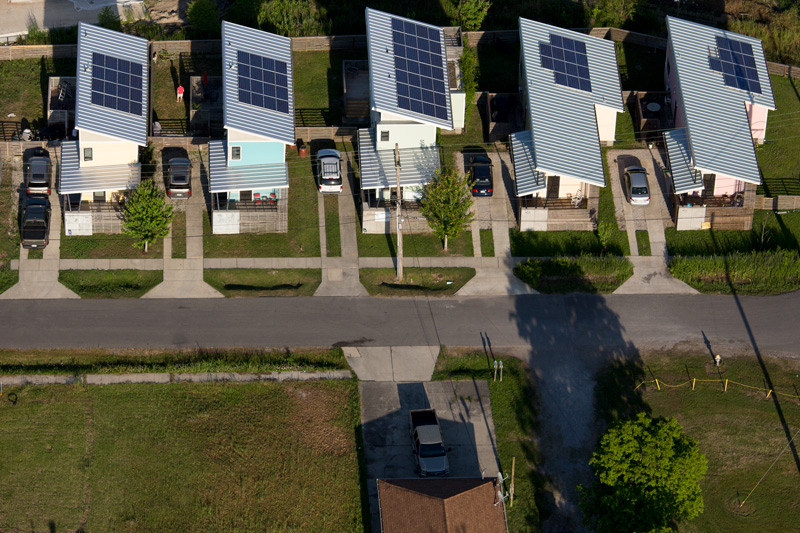
Global Green’s Holy Cross community project, Lower Ninth Ward, New Orleans, Louisiana. Commissioned photograph for the exhibition. © Stephen Wilkes.
I brought a friend along to the show, a professor of environmental law at UCLA, who was impressed with the show but found the presentation to be a rather optimistic about how resilient communities can actually be when faced with climate change induced natural disasters. That being said, it is a treat to learn about the response of architects and planners who innovate in the face of whatever disaster might next arise. For instance, she told me about a study from American Rivers that posits that Sacramento has a higher probability of suffering devastating flood damage today than New Orleans. Even away from the coastline, our cities are threatened by climate induced water-encroachment.
Preservation of wetlands are a key defense against encroaching water — the film did point this out — and we can point to positive projects such as the Malibu Lagoon project as a good example of how elementary a good resilience project can be. Click here for our article about visiting the Malibu Lagoon).
Finally, our favorite photographer in the show is Stephen Wilkes, not only because of his dedication to the people of New Orleans (he spent over five years taking pictures in the Ninth Ward), but also because we adore his new artier work, which is innovative technically and esthetically lovely — he shoots time lapse images showing day-to-night in famous spots around the world. The work is on view at Peter Fetterman’s Gallery in Santa Monica through December 31.

